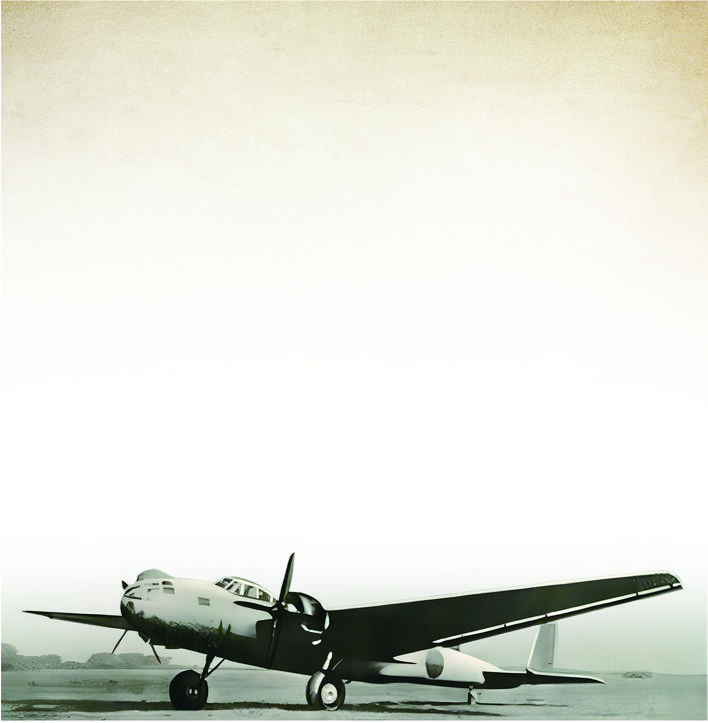发布时间: 2023-08-24

日本“九六”式陆上攻击机(资料图)
August 14, 1937, is a day worth remembering in the history of the Chinese Air Force. The Japanese army dispatched 18 bombers, divided into two groups, from Taipei Songshan Airport to undertake a bombing mission in Jianqiao (Hangzhou) and Guangde (Anhui). In the sky above Hangzhou, the Chinese Air Force launched a large-scale air battle with the Japanese for the first time. With a 3-0 result for China, it was a complete victory in the air battle between China and Japan, breaking the myth that the Japanese Air Force was invincible.
At almost the same time, another platoon of the Japanese Air Force was returning from southern Anhui, and one of the enemy planes lost its orientation and crashed in the mountains of Zhuzhai (in the area between where the villages of Xinguang and Zhifeng, Yuzhai Township now lie) in Pujiang. A Japanese pilot was captured, and the wreckage of the enemy plane, including pilot seats, parachutes, guns, etc., was moved from Pujiang to Jinhua for public exhibition.
On the 86th anniversary of this event, the descendants of Jin Pingou, the collector of the pilot’s seat of the wreckage of the enemy plane, donated it back to Pujiang.
“Boom! There was a loud noise, and a fire suddenly flashed out of the clouds in the dark sky. A plane belching black smoke swooped down from the southeast side of the village and crashed in a mountain depression northwest of the village.” 95-year-old villager Zhu Yaoxiang still remembers the scene of the Japanese plane crashing into Zhu’s house in Pujiang. “I was 9 years old that year, and the loud noise scared me so much that I fell into the water.”
It was August 14, 1937, around dinnertime, and it was drizzling. Zhu Yaoxiang followed the adults to the scene, only to realize that it was a parachute and a pilot, and there was a seat under his buttocks. The pilot was motionless for a few minutes after landing, then stood up, limping and embarrassed.
When villager Zhu Shaoyi learned that he was Japanese, hatred welled up in his chest. He picked up a hoe from his home and was about to smash him to death, but the surrounding villagers dissuaded him. Subsequently, the villagers escorted the pilot to the village, arranged for guards, and sent someone to report to the township government.
Zhu Yaohui, a villager who graduated from the Baoding Military Academy, tried to communicate with the captive in Mandarin, but the other party could not understand or communicate back. He was given a pen and paper and wrote the word “Taiwan,” indicating that the plane took off from Taiwan.
Zhu Xiguang is a local lover of literature and history who has studied the history of World War II in Zhuzhai for more than 20 years and recorded the memories of many witnesses through oral interviews. He explained that the plane crashed into the valley 3 or 4 miles away from the village, and many villagers rushed to see what happened. The wreckage of the plane was scattered all over the place, the main part of the plane was still burning, there was a small piece of scorched black earth nearby after the rain, there were six dead bodies at the scene, and holes were smashed in the ground around the plane.
Over the years, Zhang Jiemin, a researcher on the history of the Republic of China in Pujiang and vice president of the New Fourth Army Research Association, and Jiang Dongfang from the Yuequan Institute have consulted data for verification, and have unearthed more details from the numerous historical materials.
On the second day after the enemy plane crashed, the Japanese prisoner was escorted to the township government by villager Zhu Hexiang and the police. At the same time, the police hired farmers to pick up the wreckage and have it delivered to the Pujiang County government. Carrying more than 30 loads of plane wreckage on their shoulders and escorting the captives, the group walked in a meandering way, attracting crowds of onlookers along their route, and everyone was elated when they realized what they were seeing. Finally, the prisoner were transported to the provincial security office in Hangzhou.
According to Zhang Jiemin, the enemy plane that crashed was a Japanese “96” land attack aircraft with 7 crew members (pilot, co-pilot, bombardiers, and machine gunners), 16.45 meters in length, and nearly 5 tons in empty weight. This model was the main bomber aircraft used by the Japanese to bomb Chinese cities.
On August 15, 1937, the Southeast Daily reported the incident for the first time: “The enemy plane fell into the Pujiang River and was captured. … An enemy plane landed suddenly, and there were Japanese people in the plane… the other one has been captured alive and will be released for investigation on the 15th.”
Zhejiang Anti-Japanese War History clearly records: “On the same day, when the Guangde Air Raiding Team of the Luwu Air Force was on their way back from southern Anhui, another enemy plane fell into Pujiang County, Zhejiang Province, because it lost direction during the night flight.” (English text edited by Kendra Fiddler)
| 1 | 2 | > | >> |

